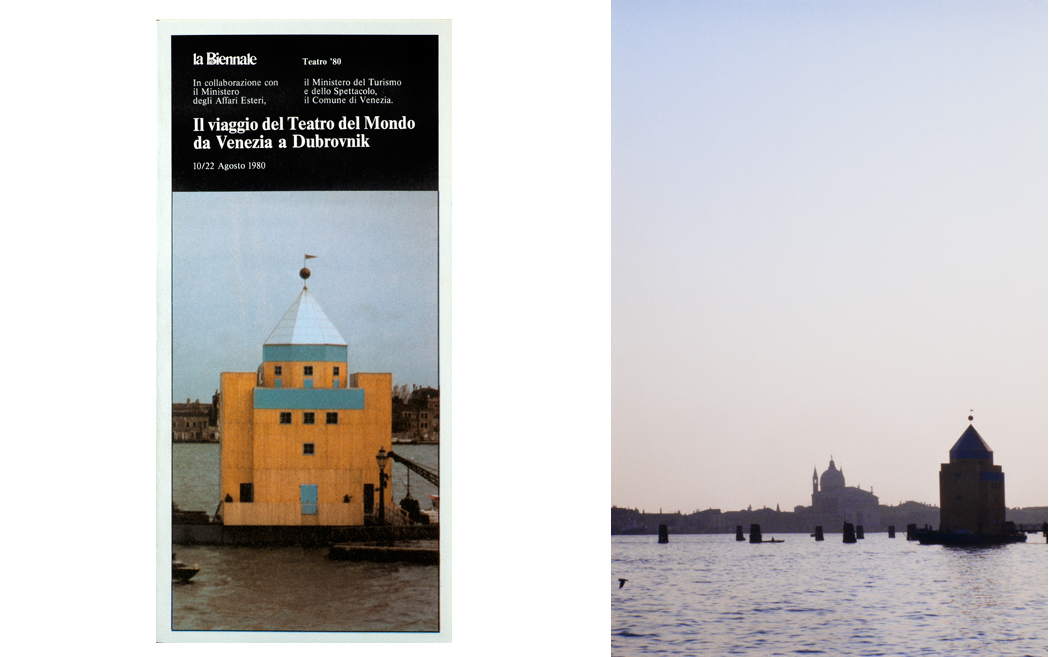Aldo Rossi Teatro del Mondo
-
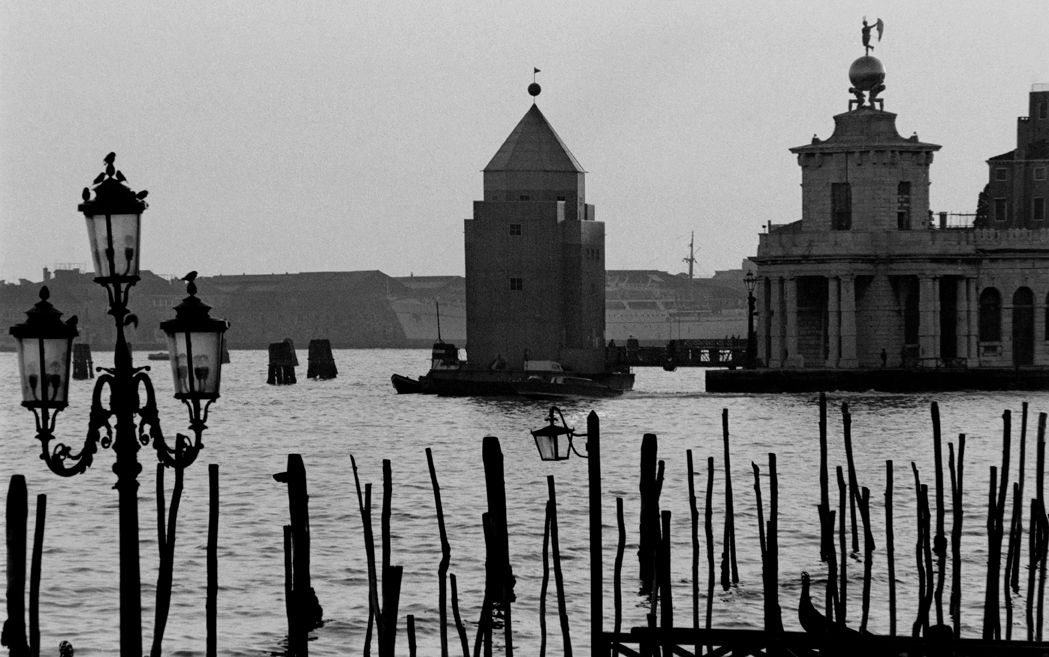
-
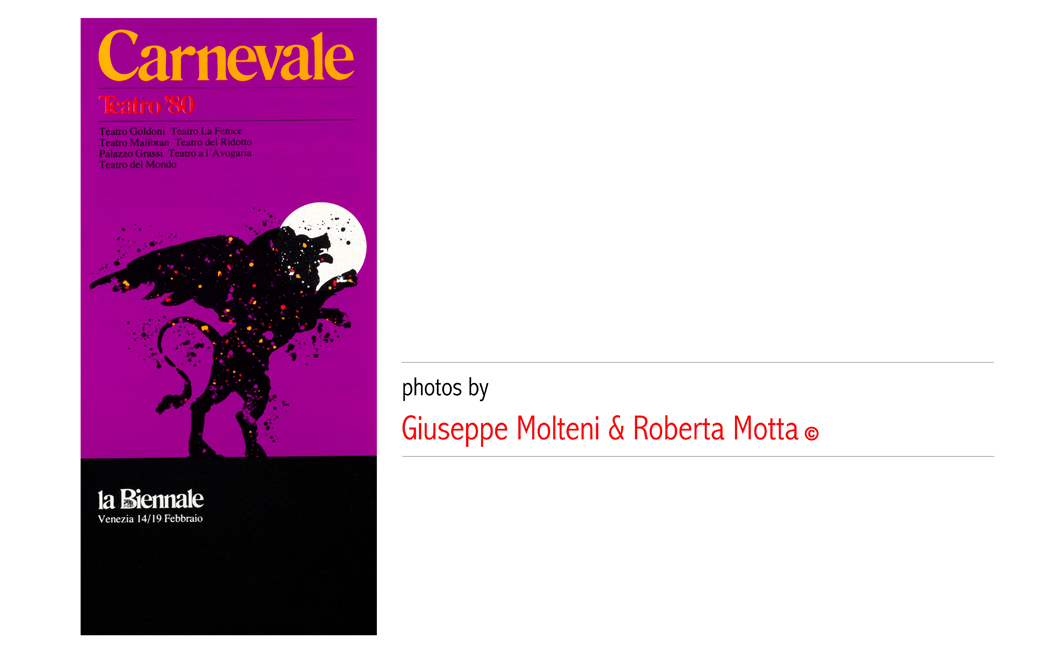
-
Aldo Rossi
Theater of the WorldCreating this Theater of the World, however ephemeral one wishes to consider it, called for due knowledge and passion for this art form, its functions, its very history, and Aldo Rossi is among those few valid architects who love and assiduously attend the theater. Rossi approaches this project with the express will of ‘discovering fantasy in reality’, over-coming the historical antithesis theatre machine, affording less of that predictable precariousness of time than its current position on water, ready to set sail, confronting that immutable ‘eternal’ reality of Venice. An act of love for the future of the city, perhaps, even a bit ‘anti-Venezia’,; the theatre always being a positive provocation, an ever-changing proposal, an ephemeral, primary source of influence. In November 1979, while embarking on an awe-inspiring walk through the fog covering the Marghera, from the naval shipyards of the Fusina to the Customs Office, the theater gave a great spectacle of itself. Even before its official opening, wherein it moved the long-forgotten waters Venice, reminding us of their deserved leading role status, after decades of decadence of the pseudo-folkloristic history of the Regata in traditional costumes, the Theater of the World sparked new incentives to hypothesize a diverse theater, given the limits of time and space. Rossi’s theater has captured the essence of classical form, echoing not only the theatrical architectures of Scamozzi and Rusconi, but also that of his scientific theater, which seen from the outside resembles that of Shakespeare’s ‘Globe’. Then there is the architect’s not at all easy attempt at creating a functional stage space, reduced by necessity, squeezed between two sets of bleacher steps, ingeniously projecting all upwards, reaching almost twenty meters. An open invitation for possible uses of this theatrical space from the indiscriminate, festive welcome that the Theater in the World received from musicians, theatrical groups and foreigners at the Venice Carnival for Theater in 1980. In this way, as with other indications of ‘tendencies’ to me particularly dear as there are in harmony with my way of making theater, we seem to have the refusal of the superfluous of a closed-minded world, with those few objects that Rossi offers to the fantasy of whomever creates theater, as well as to theatre-goers. A unique sense of fascination in Rossi’s theater is its bi-polarity, its inner and outer life, and even more, its possibility of being used and lived in as a container for theater shows. Itself an actor, a mobile protagonist changeable once anchored, it readily faces all that changes hour by hour. Visitors love it from within or without, beginning with the terrace that encircles the cupola. It is a living castle upon water which we will remember for many years, nostalgically so as it will soon not exist any longer, used then as it is by necessity, bringing us back to those times marking the end of that historic Venetian machine of the 1500’s. Before its natural end, Aldo Rossi’s Theater in the World will have accomplished the experimental functions which were proposed. We will still dream of its mobility in discovering new, ‘non- Venetian’ territories, contrasting other ‘external’ monuments, meeting new people and traditions, introducing oneself, becoming a different theatre in diverse places. Yet again, it is a Noah’s Ark of comic actors with their bag of tricks, full of the hopes and illusions that the theater has brought along through the centuries. And it is with this spirit that the Theater of the World begins its voyage, both real and fantastic, towards Yugolslavia.
Maurizio Scaparro, 1980
-
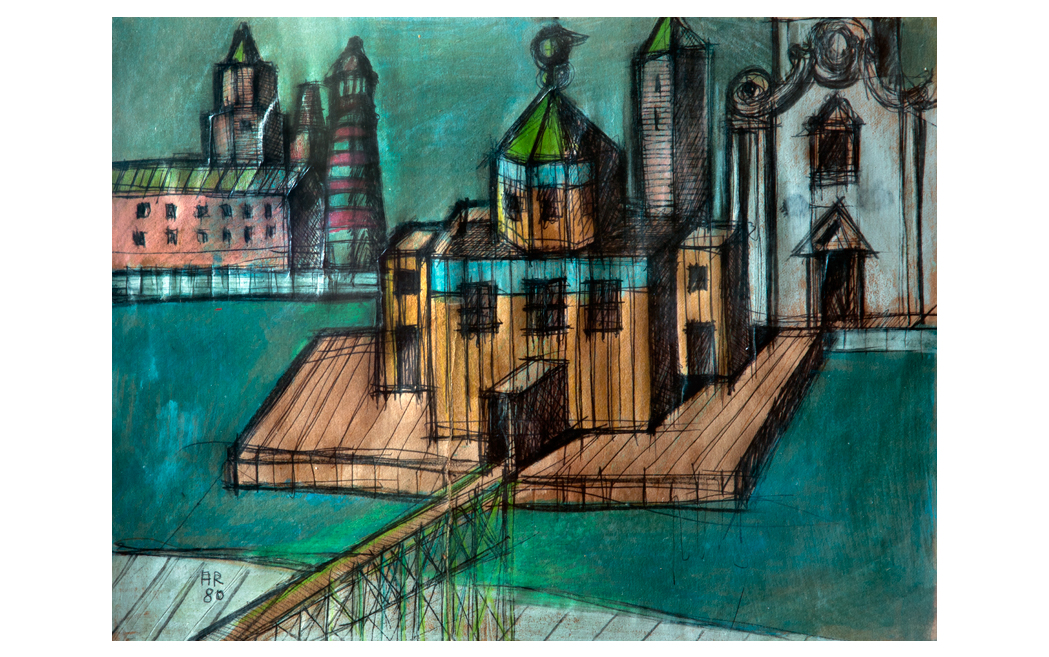
-

-
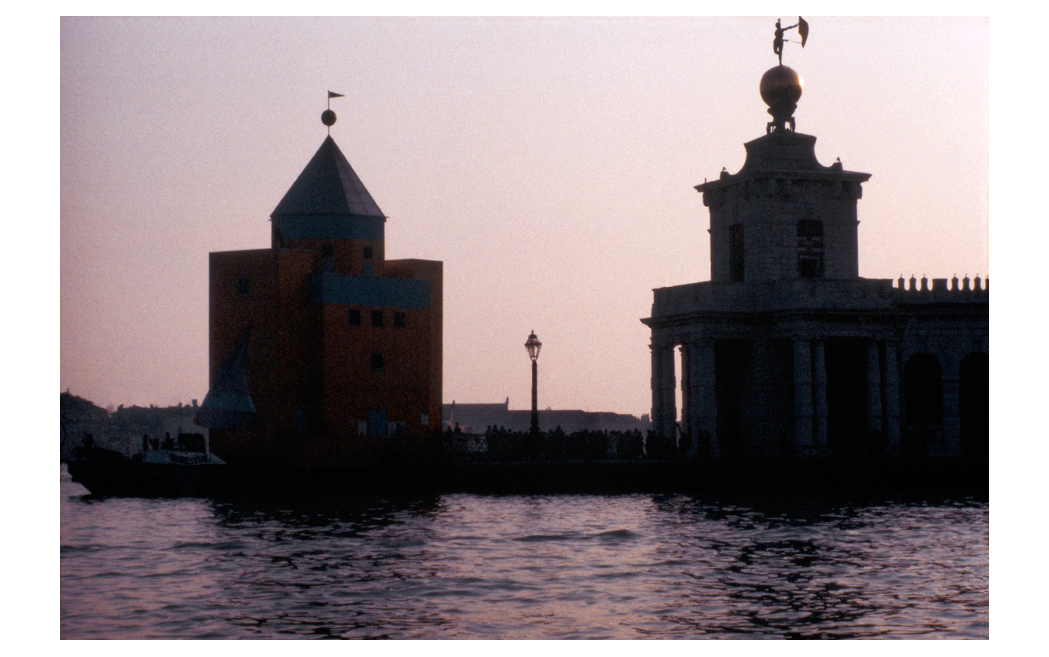
-
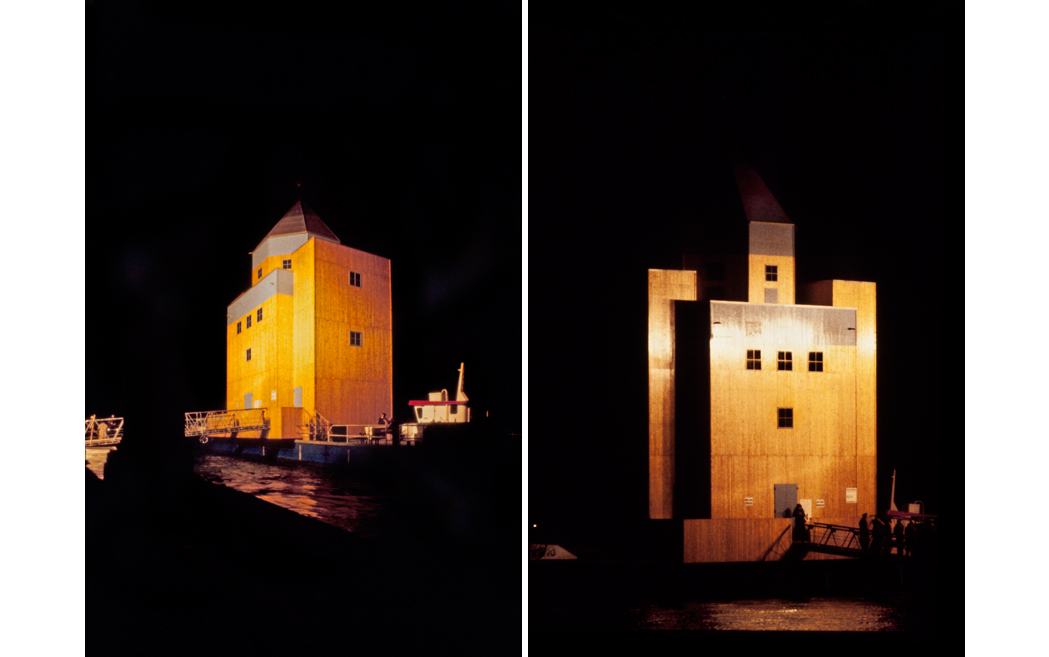
-
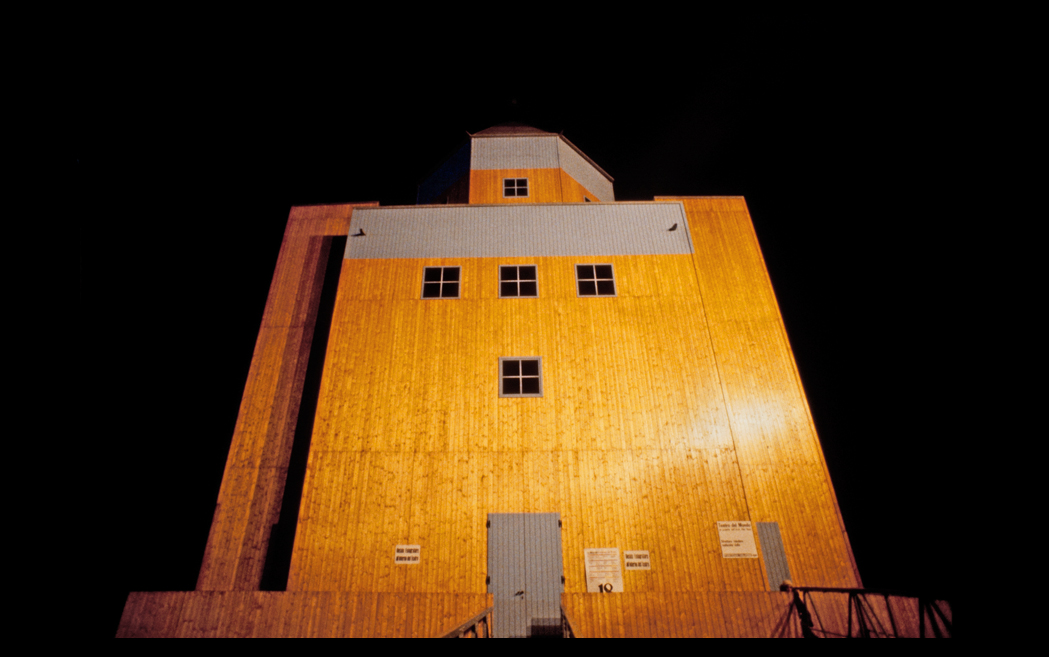
-
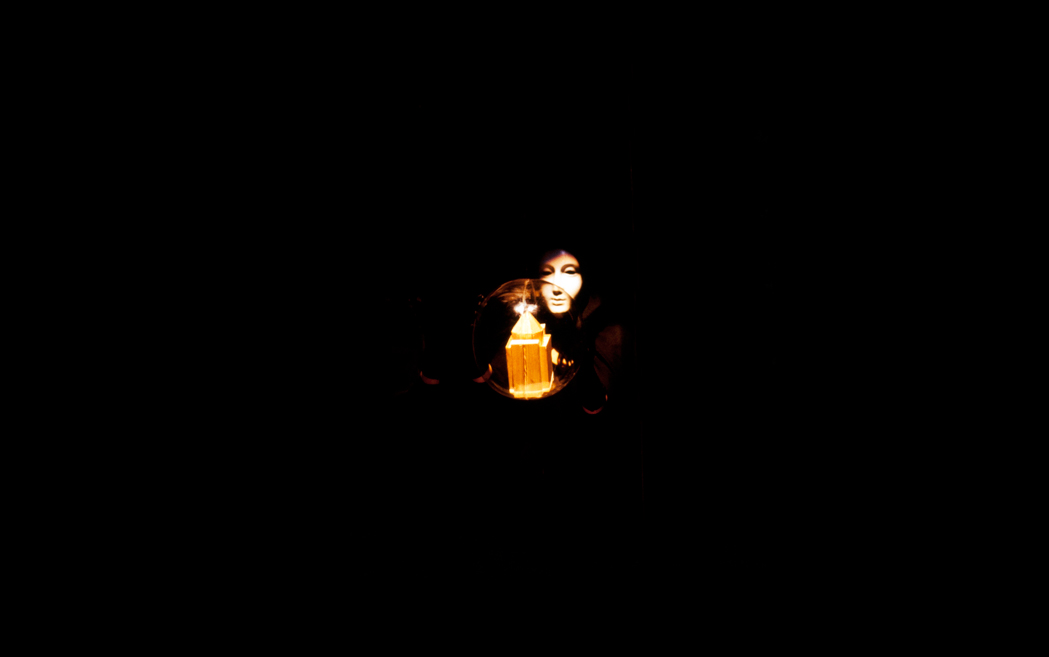
-
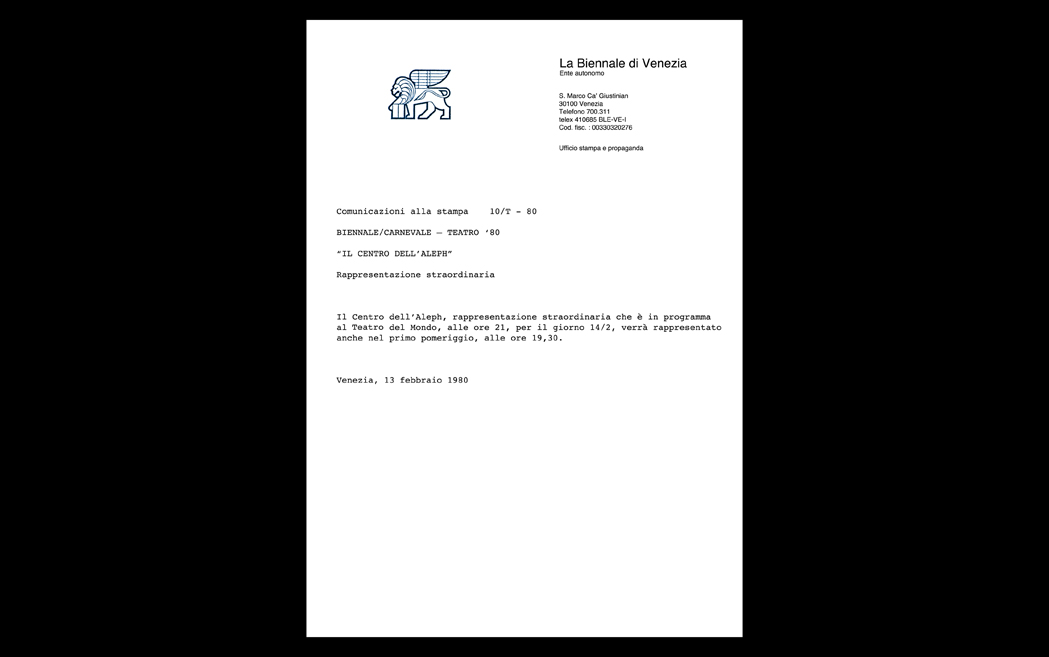
-
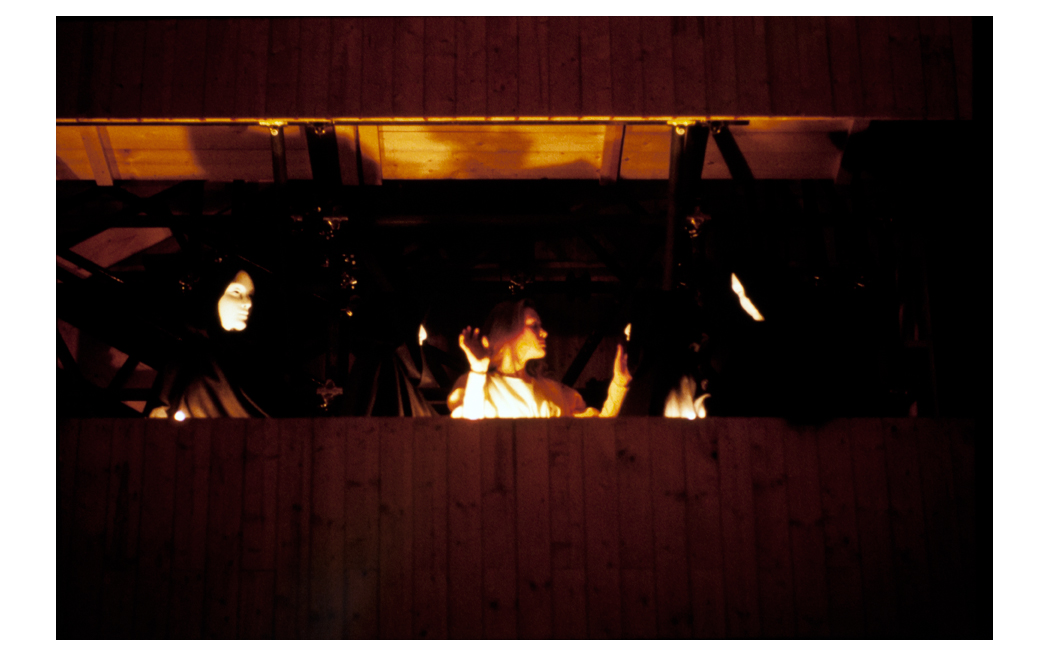
-
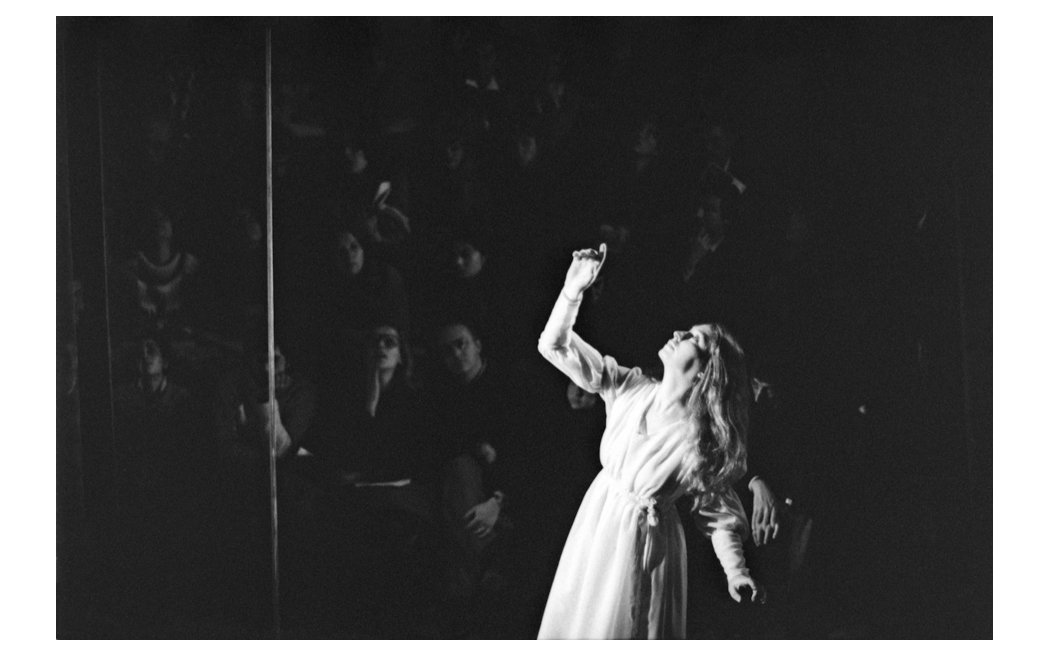
-
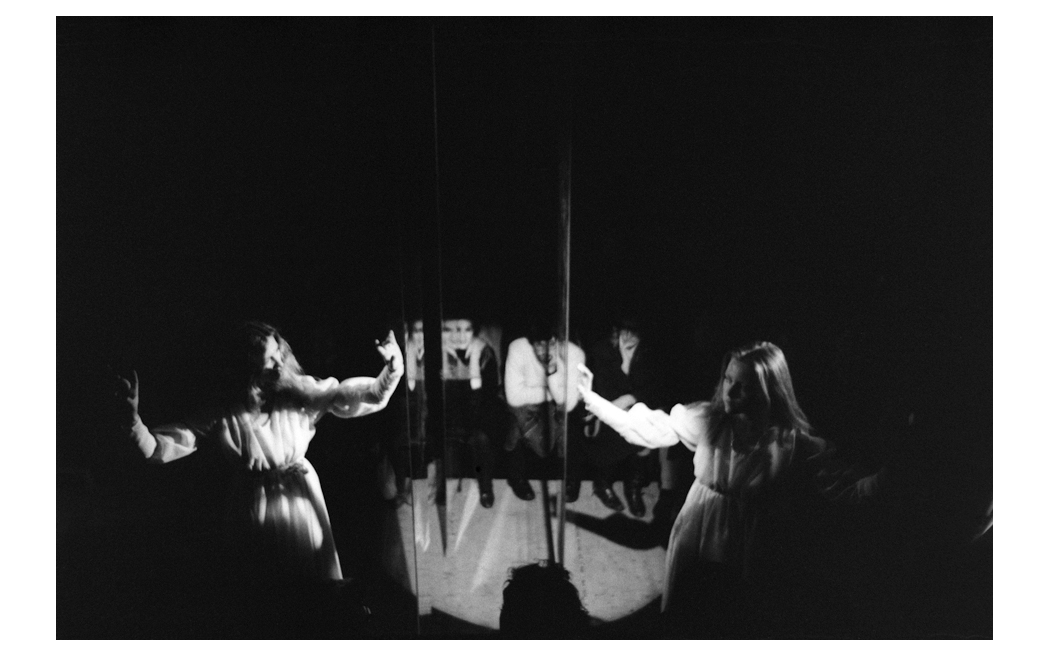
-
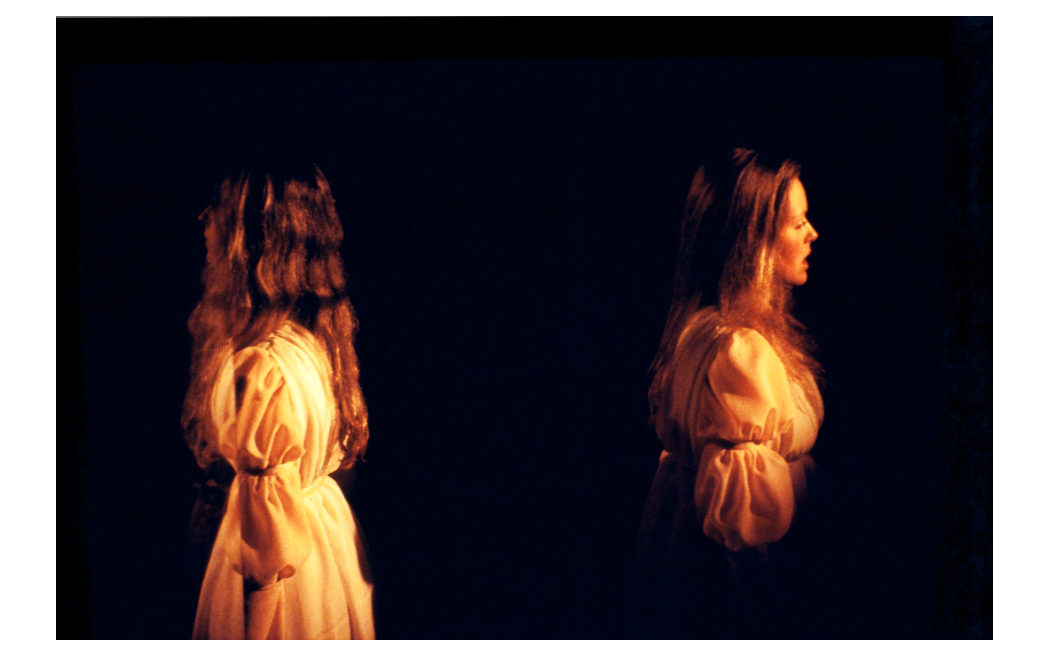
-
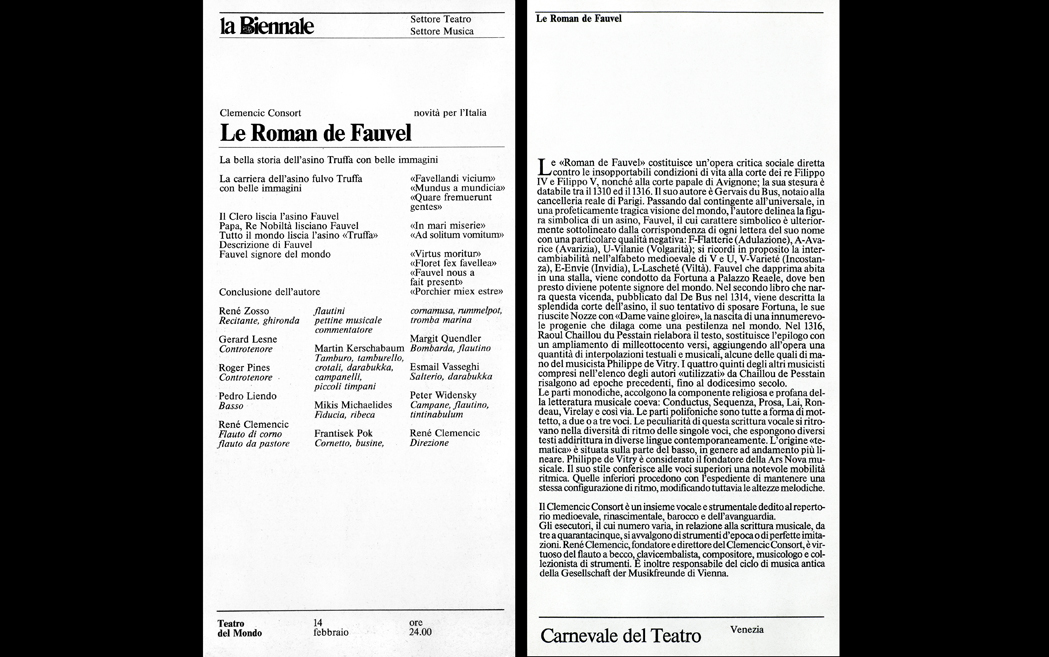
-
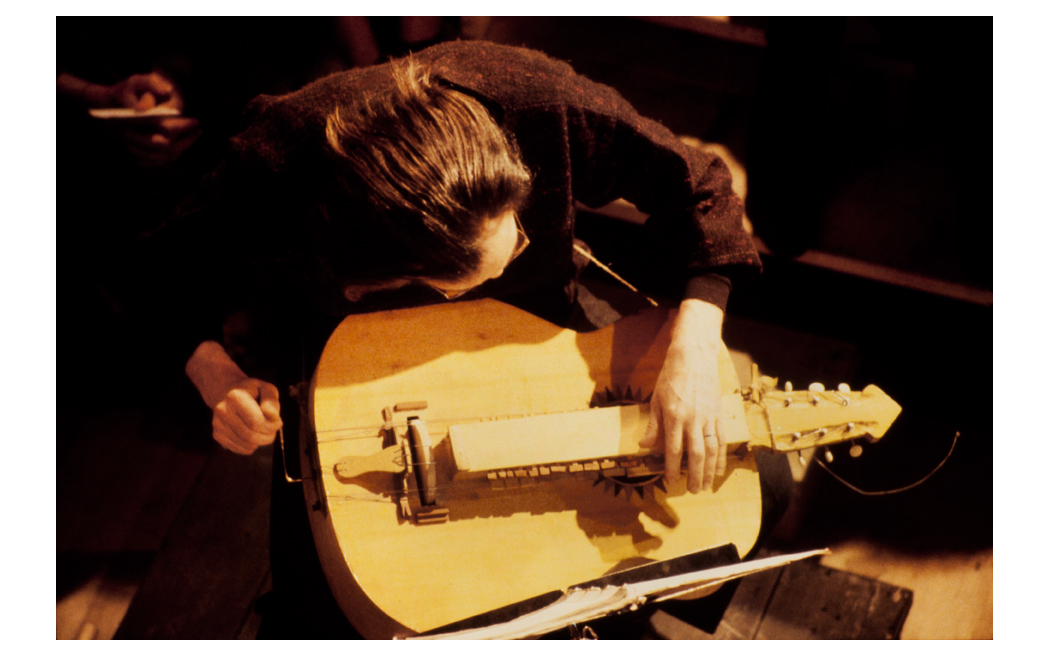
-
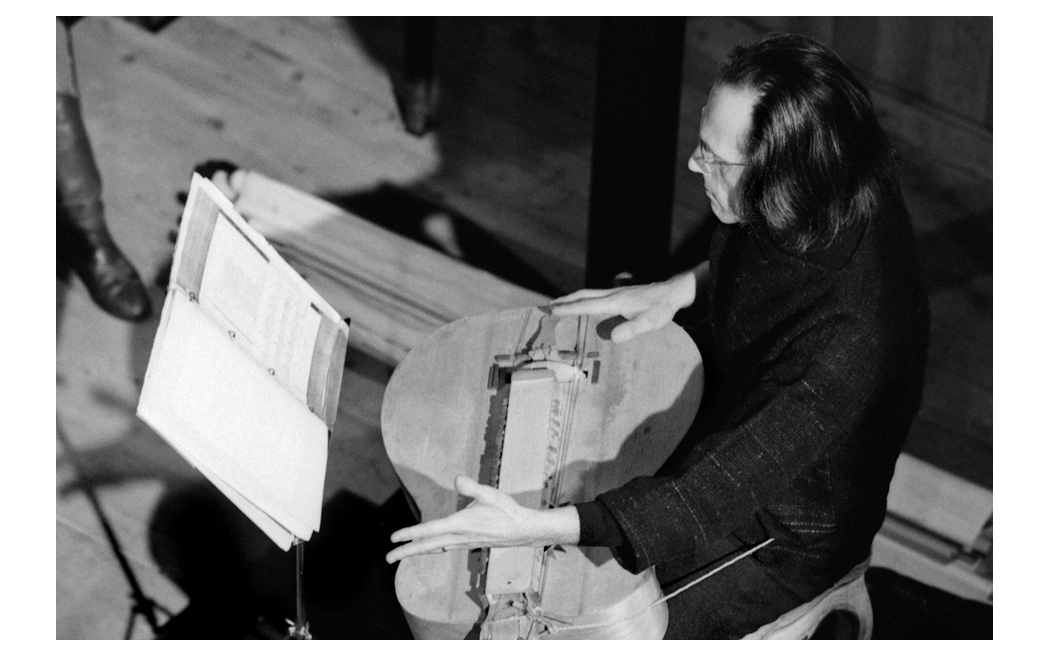
-
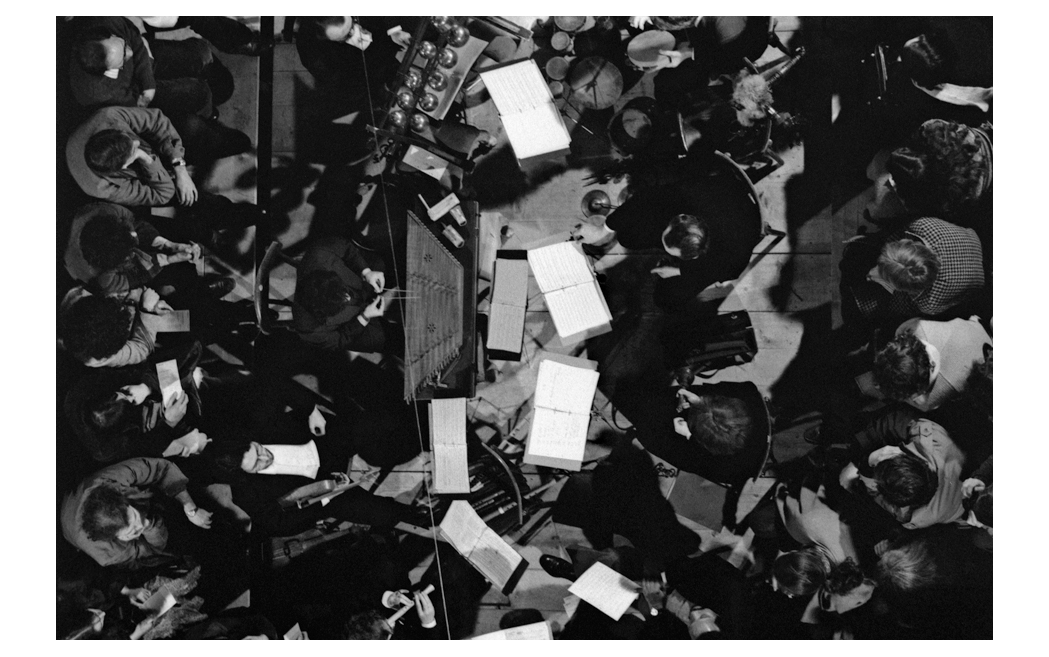
-
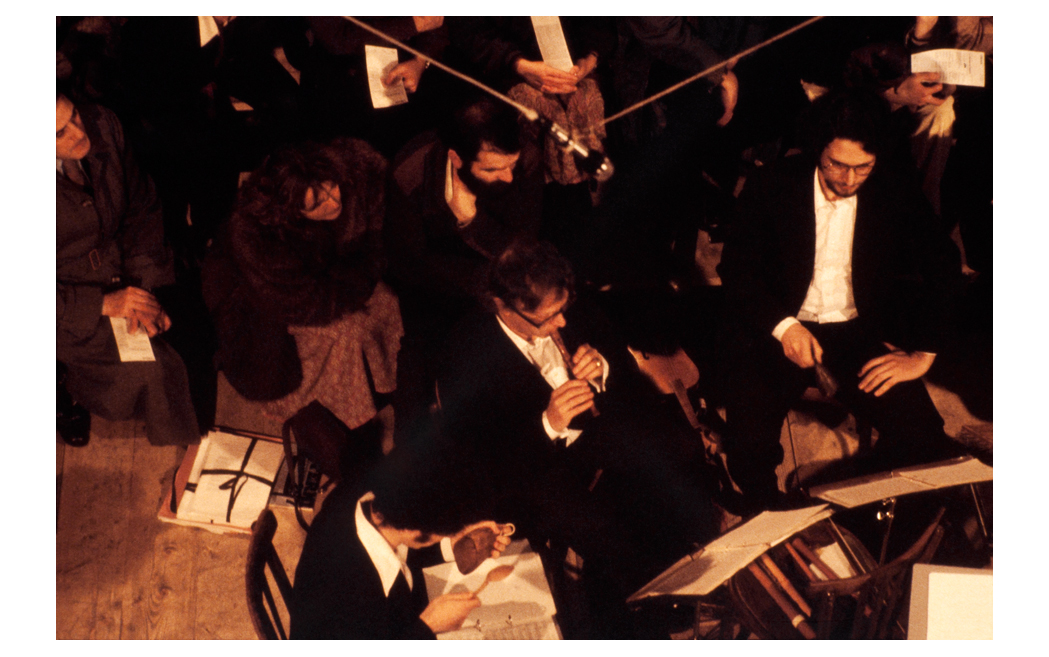
-
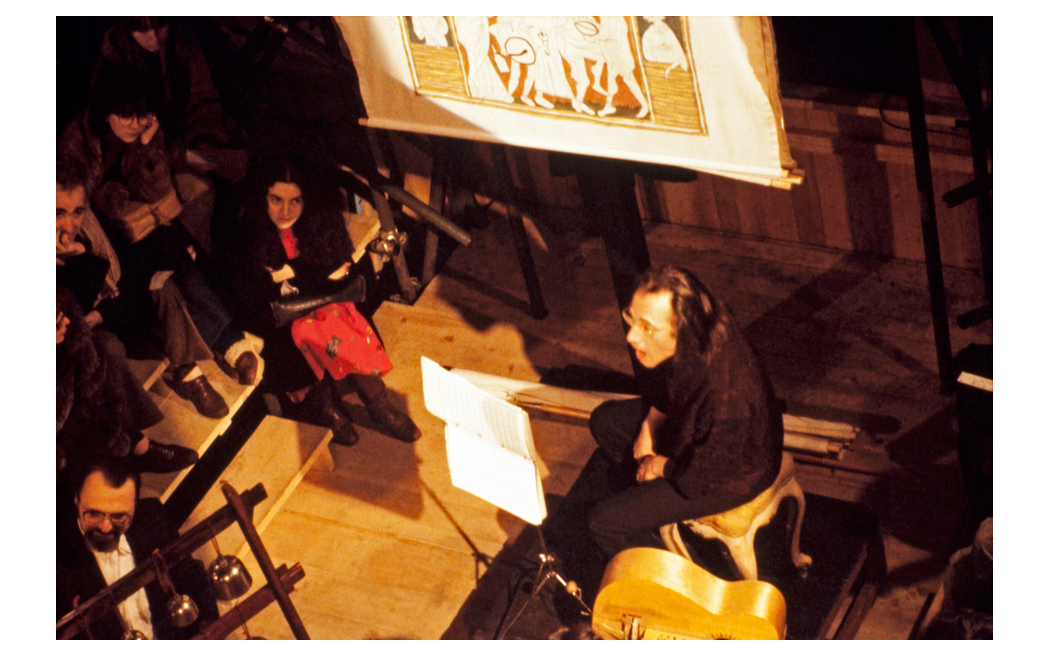
-
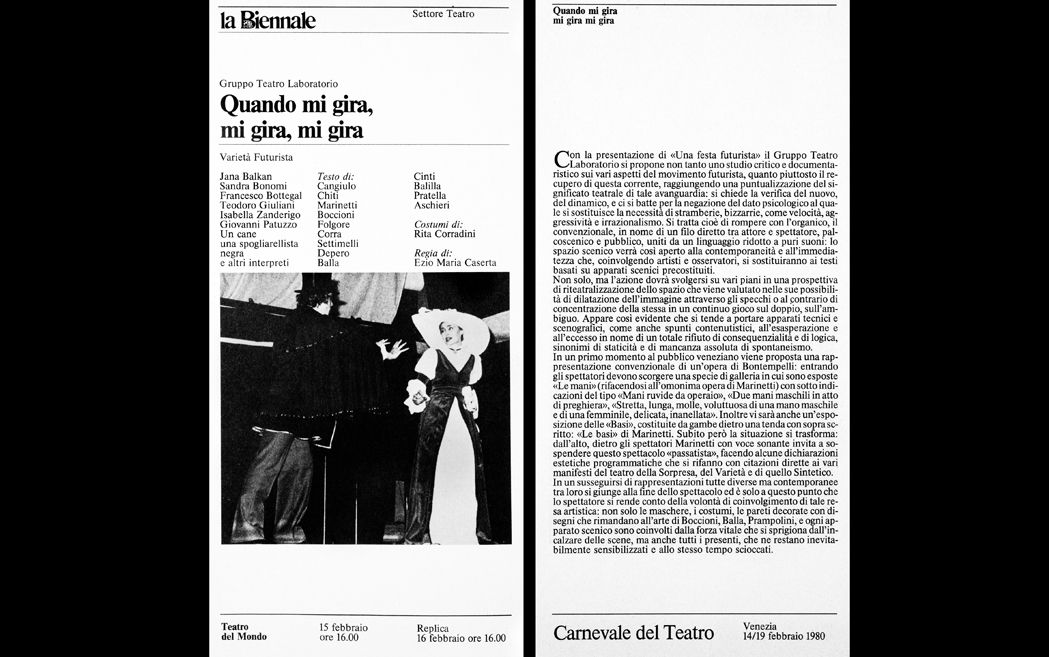
-
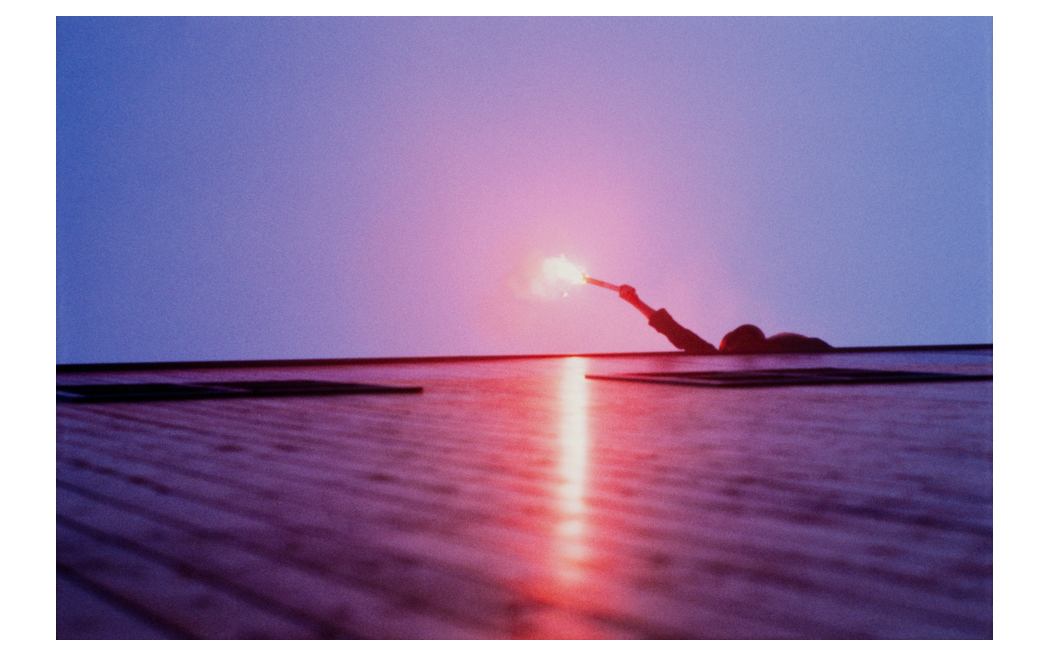
-
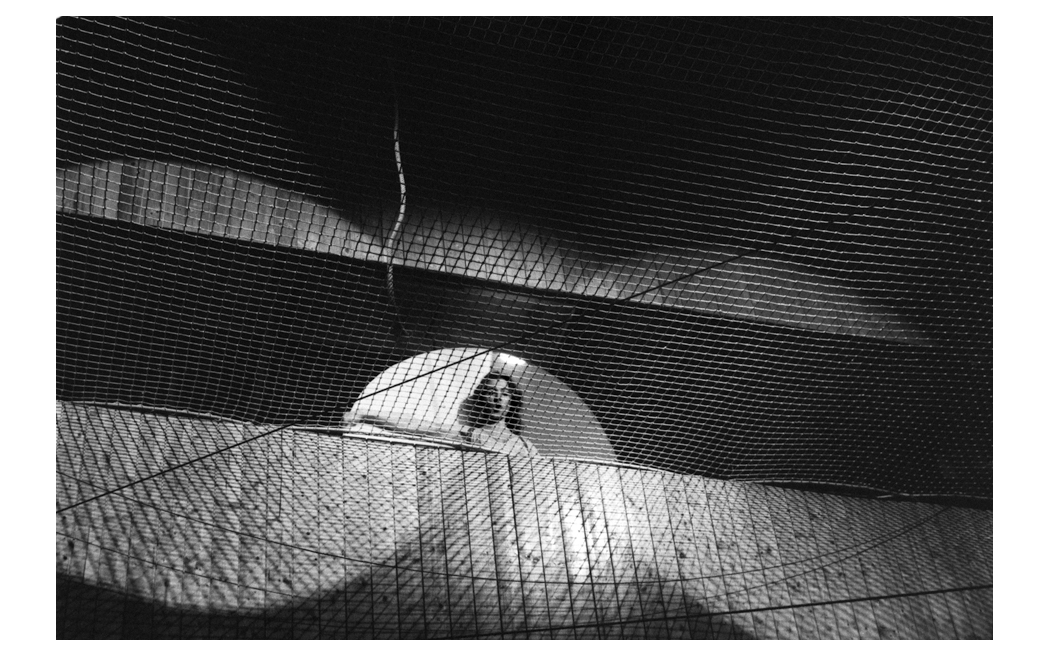
-
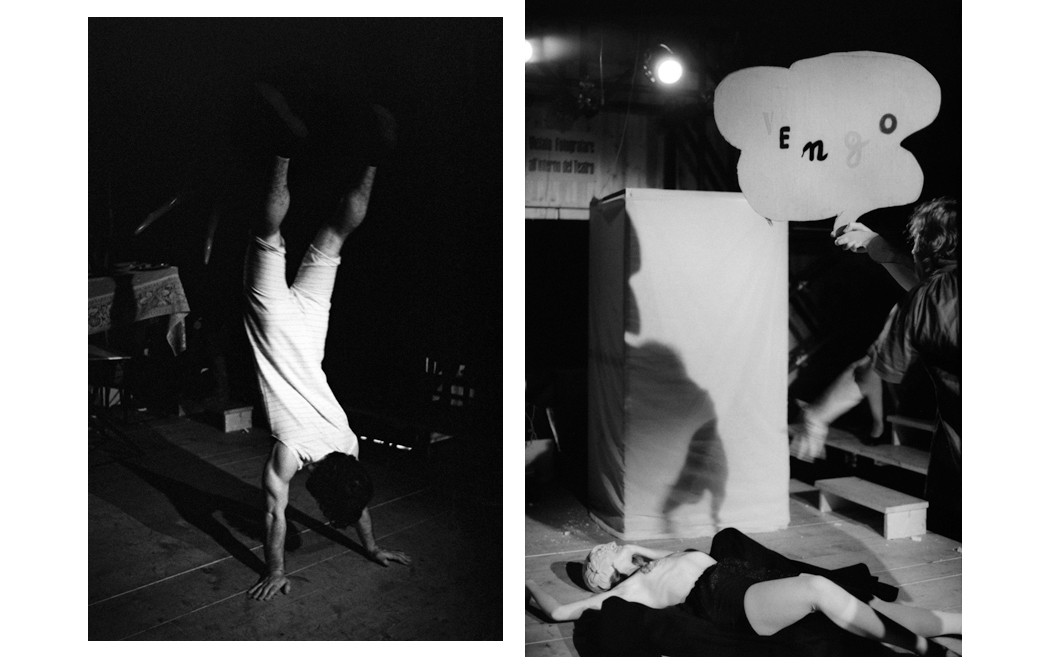
-
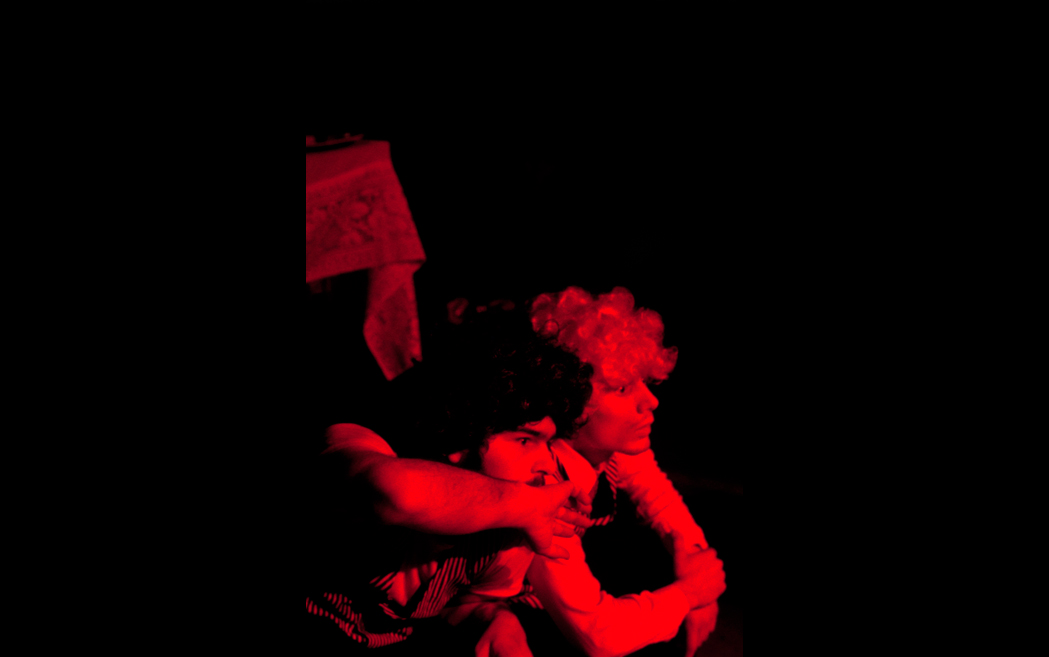
-
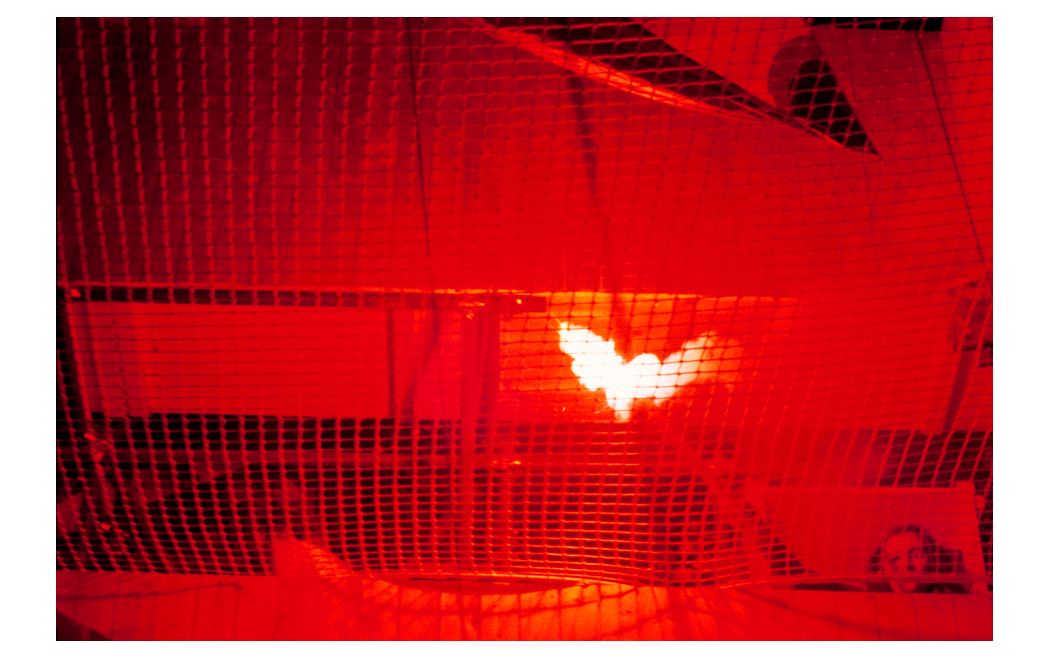
-
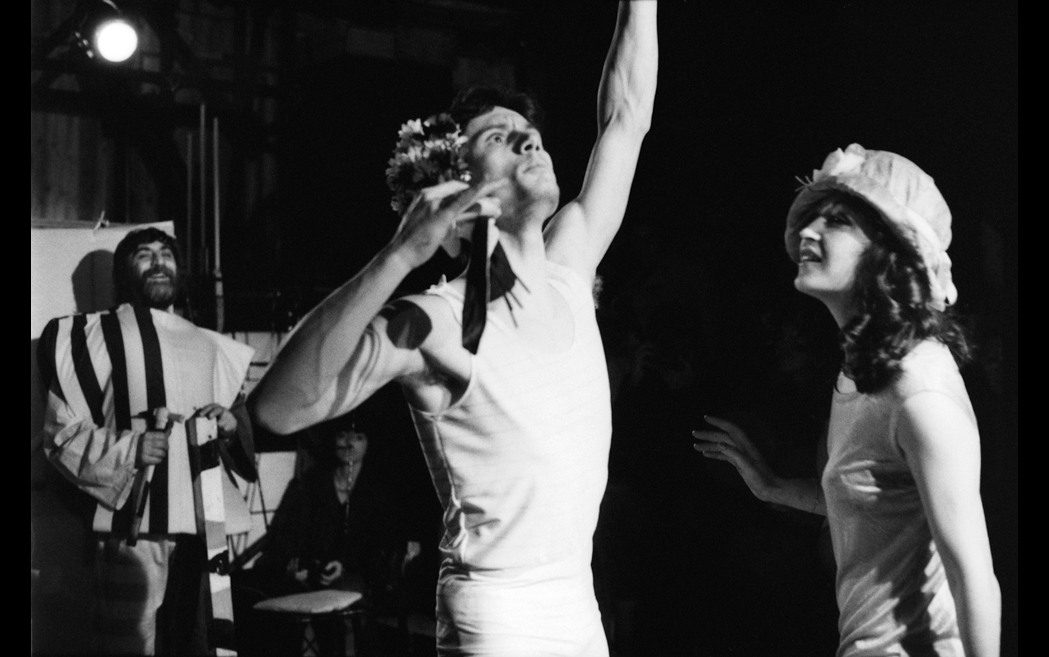
-
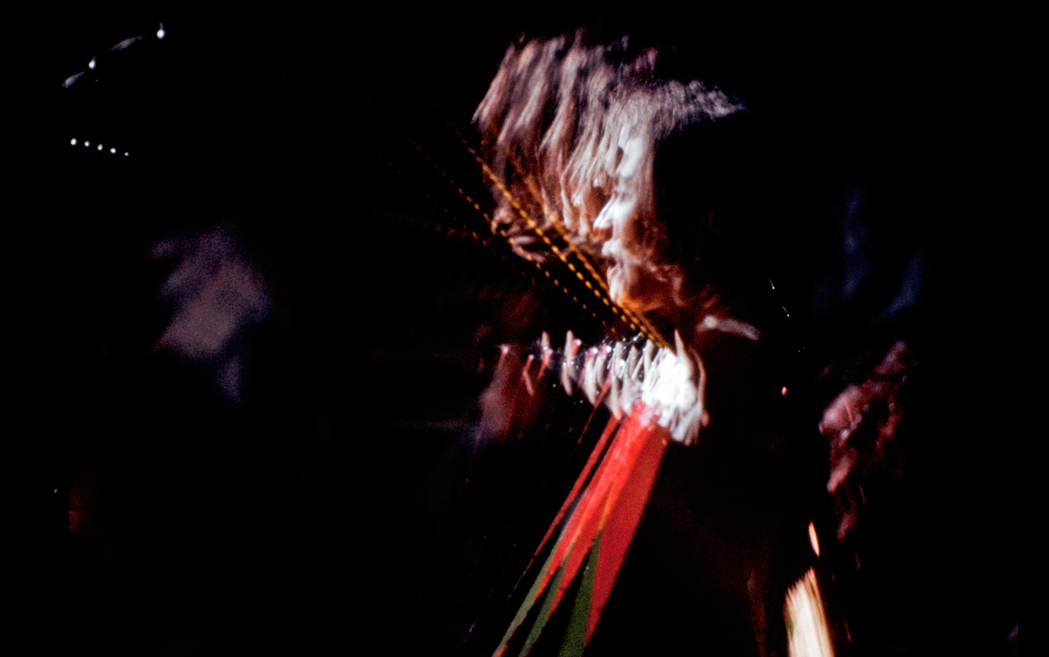
-
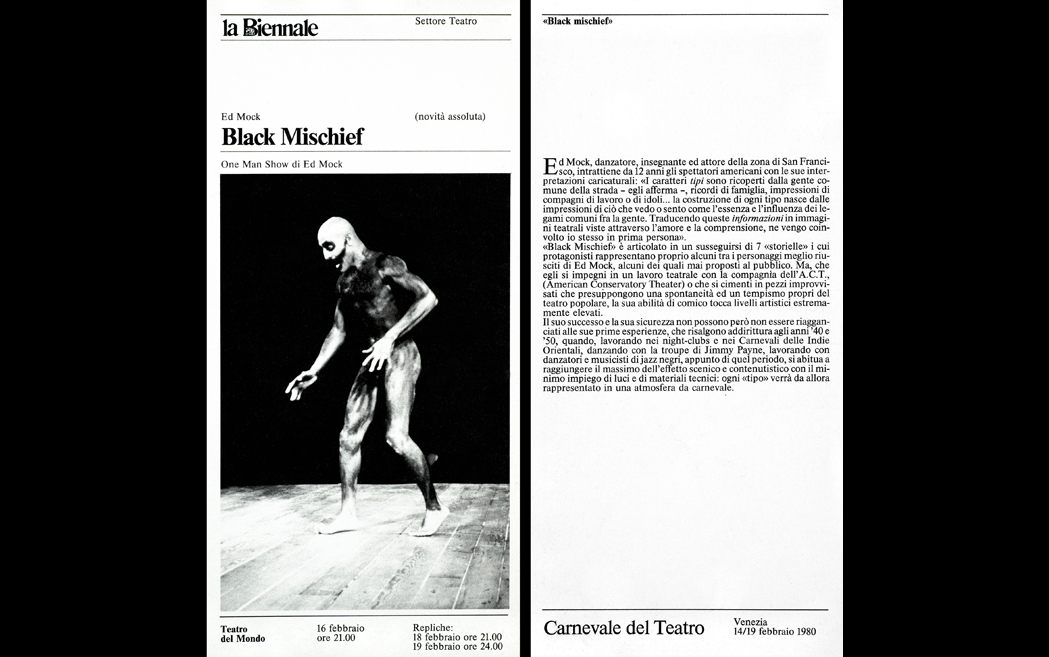
-
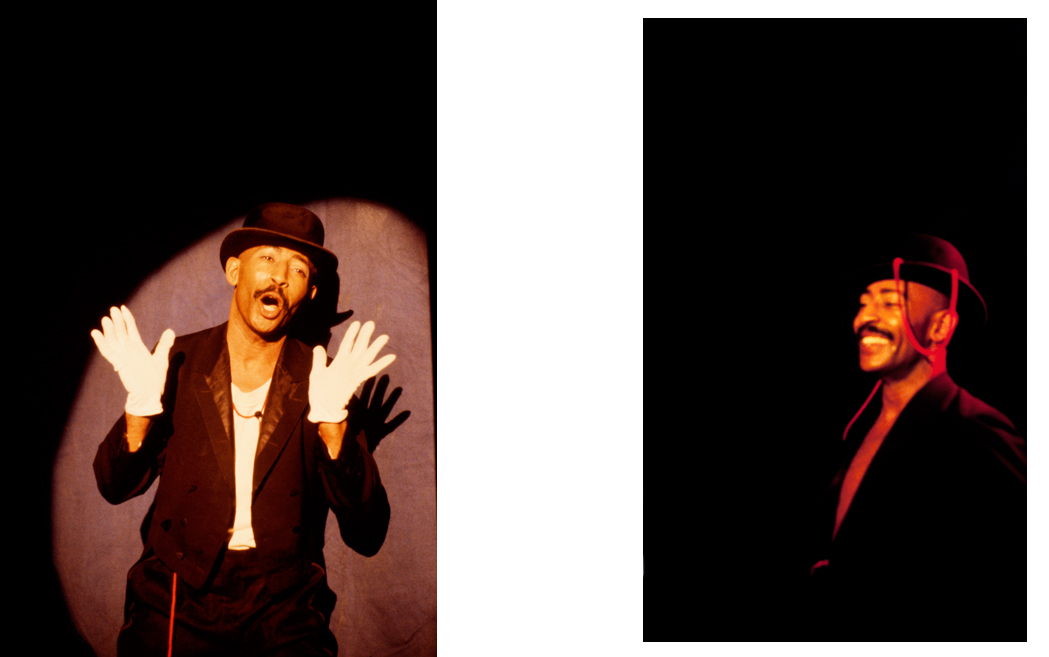
-
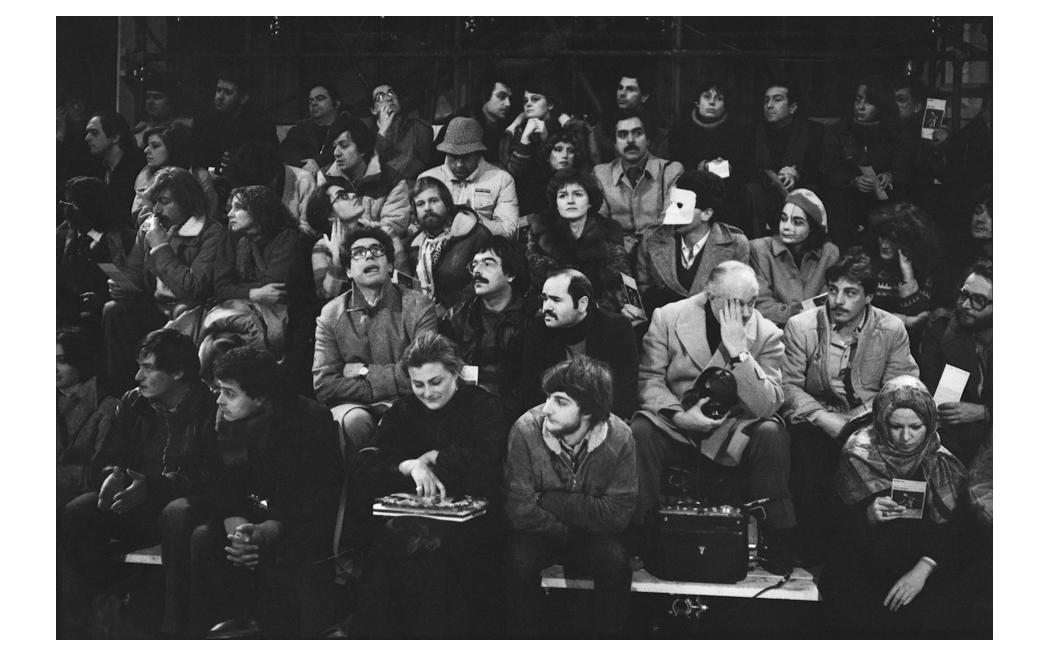
-
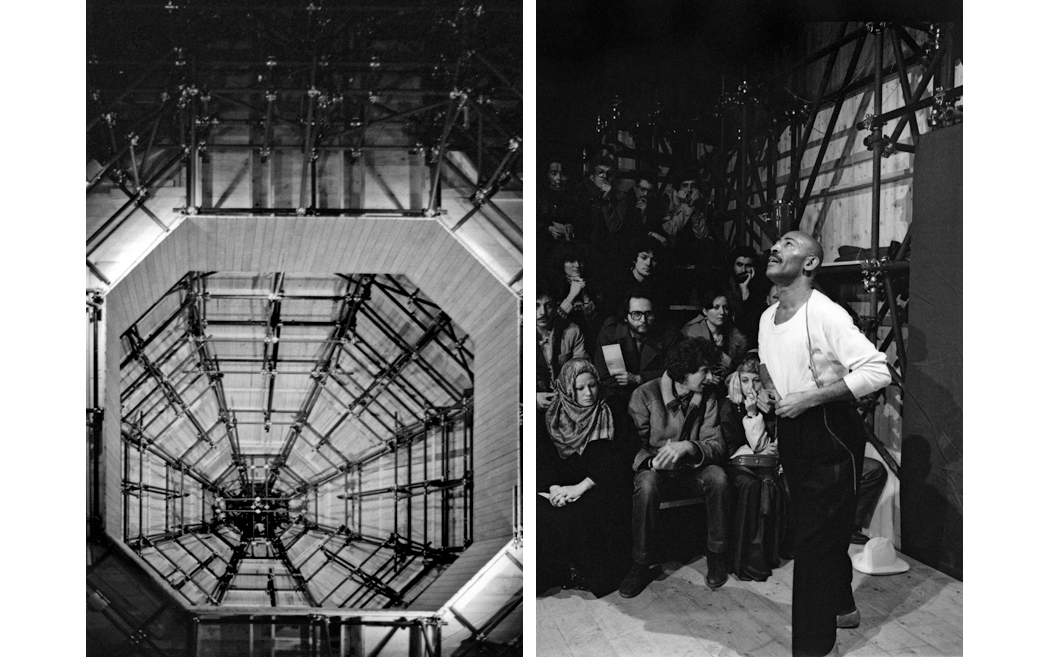
-
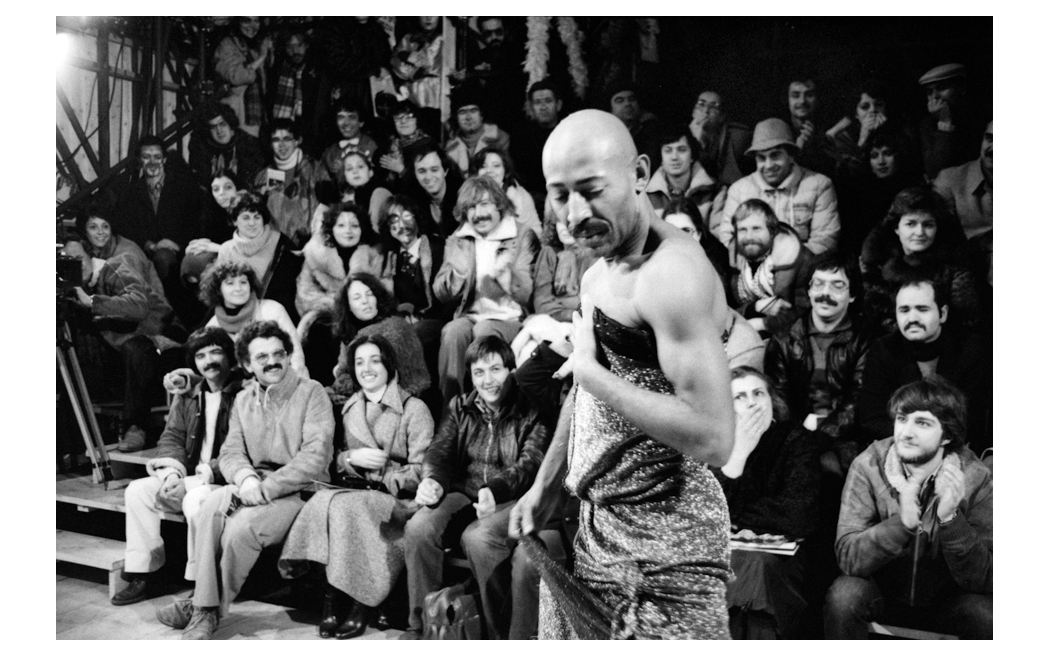
-
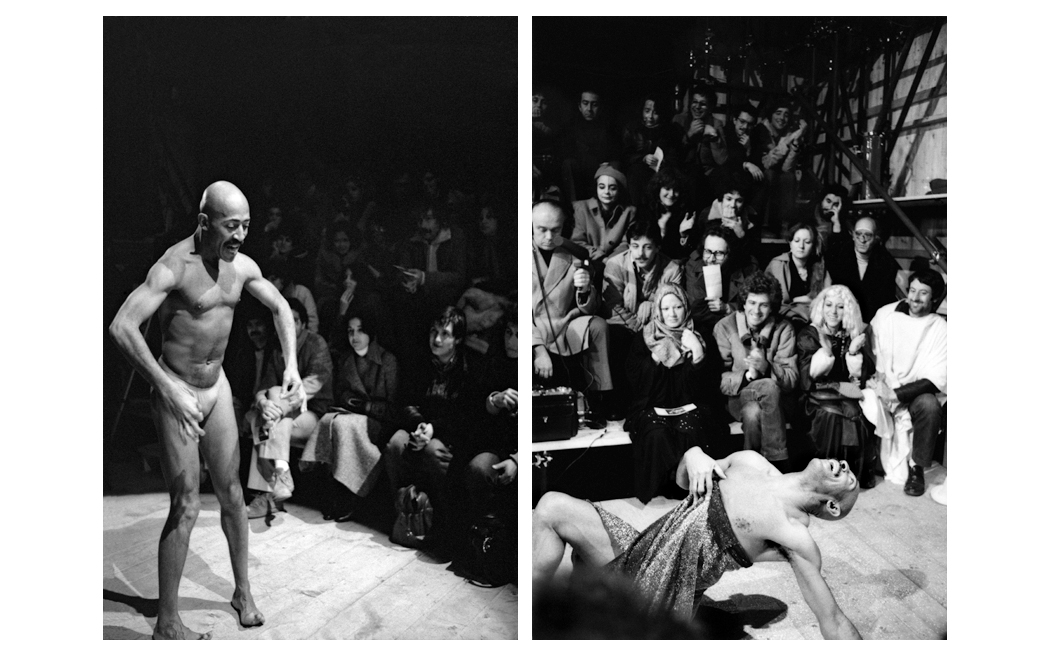
-
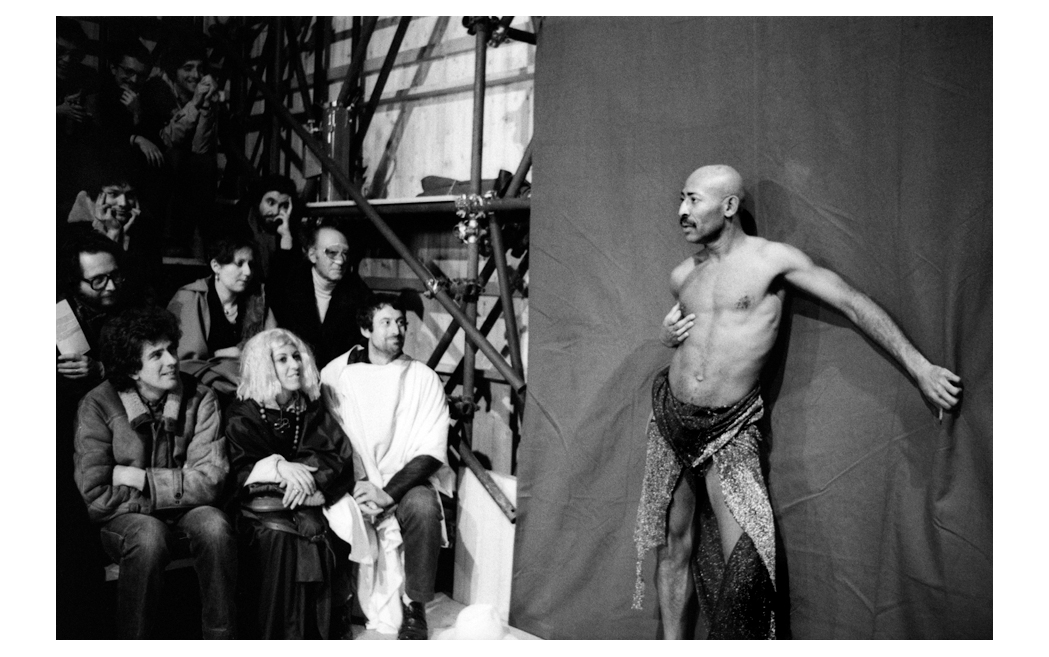
-
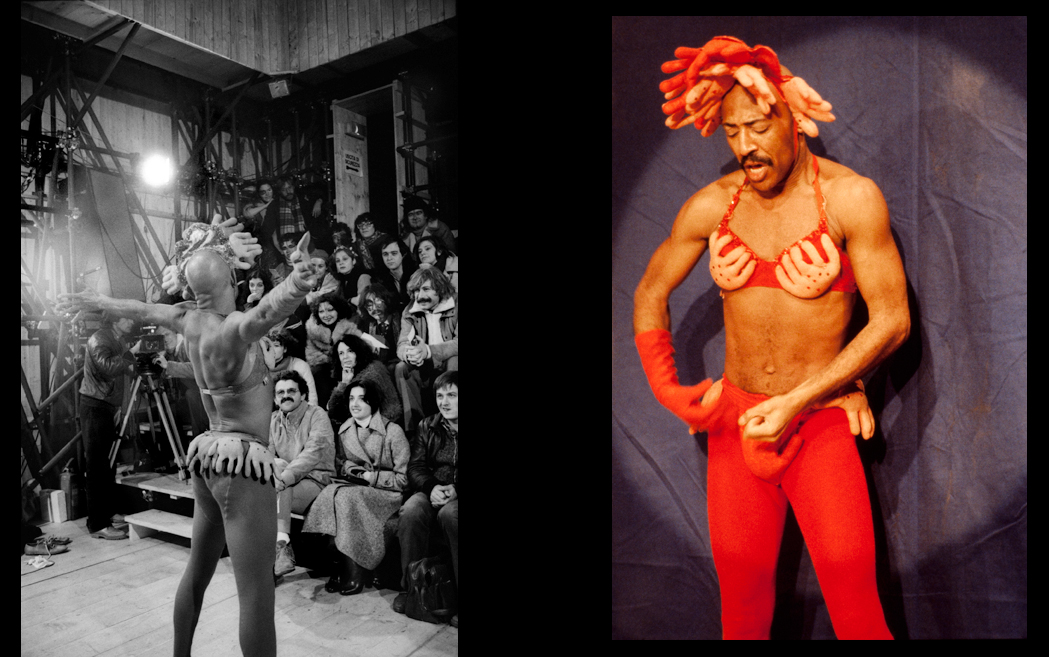
-
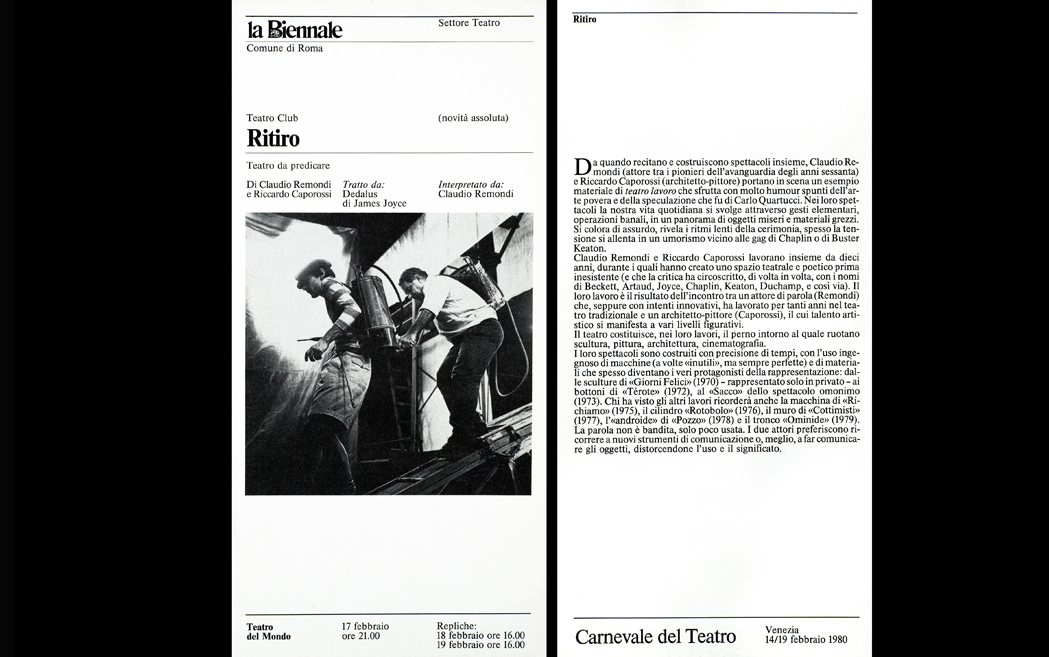
-
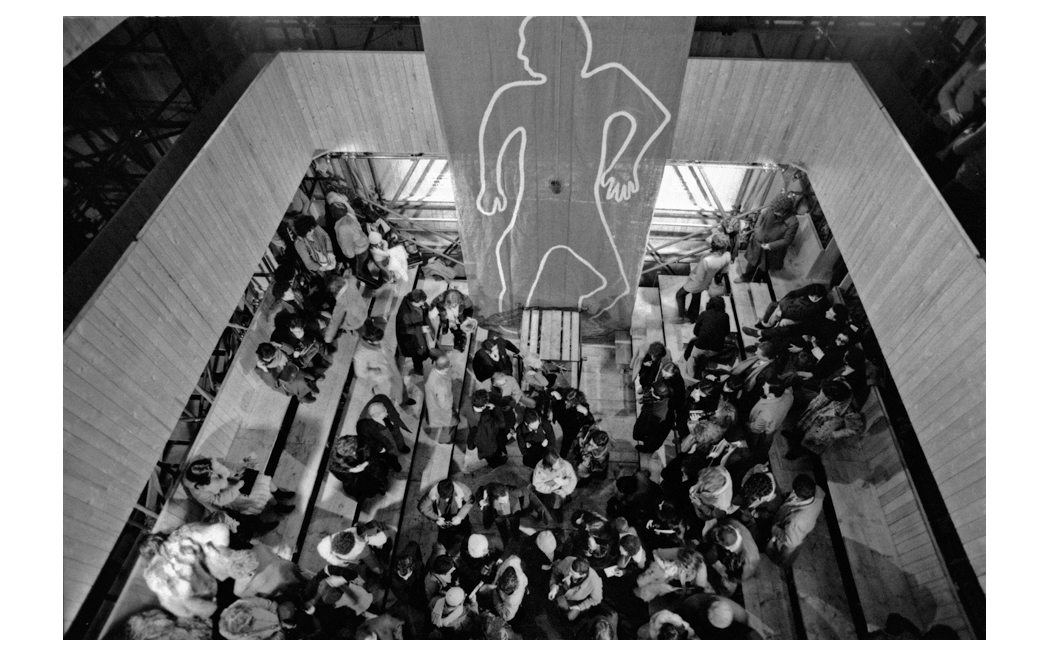
-
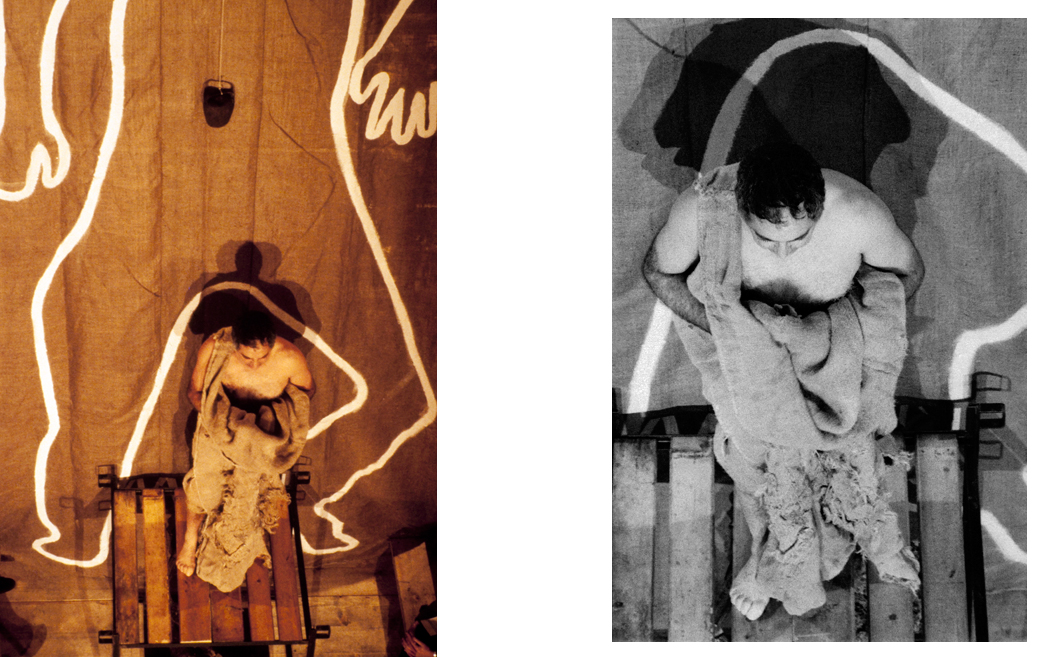
-
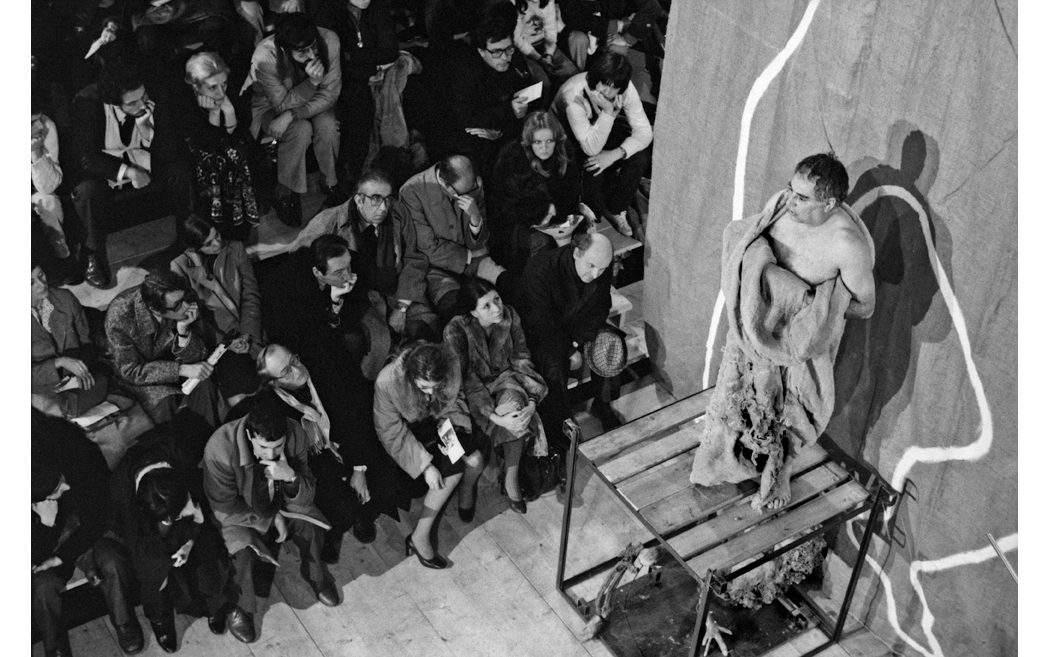
-
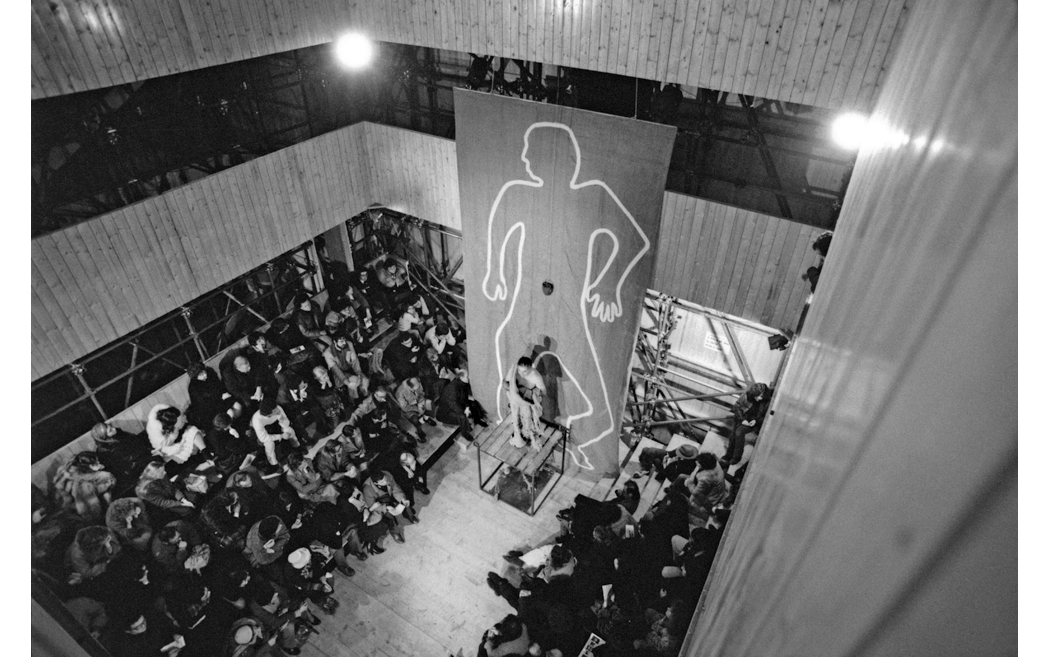
-
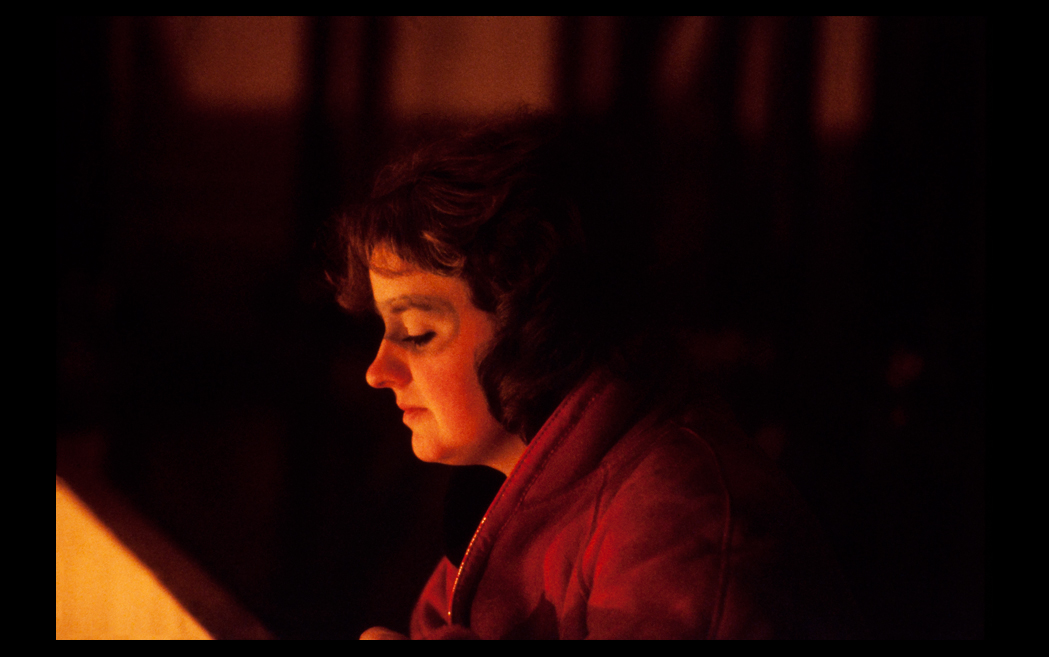
-
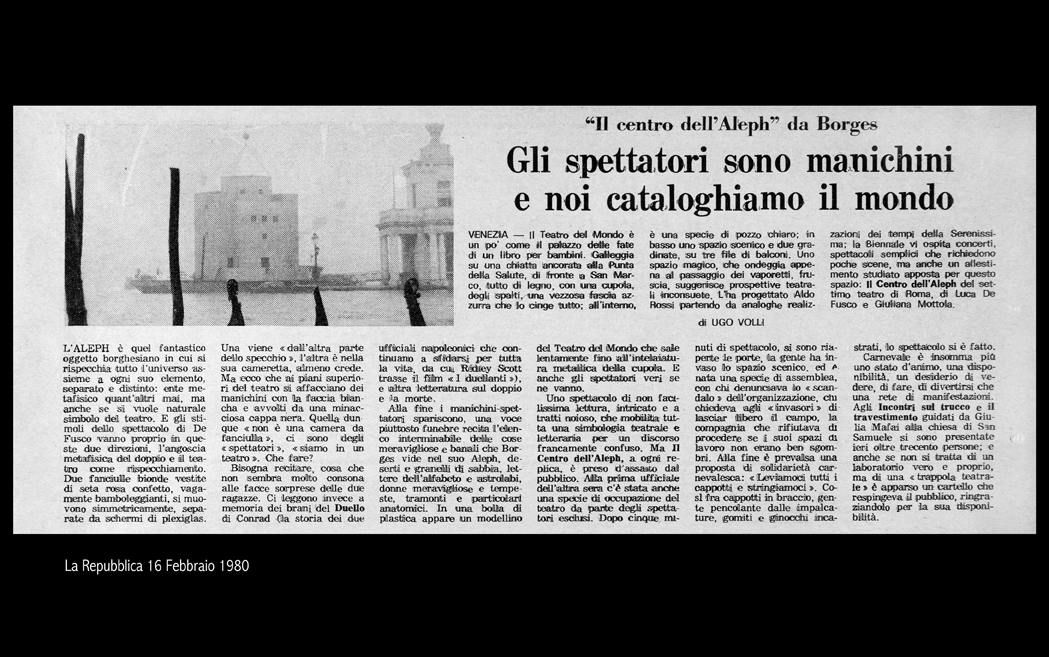
-
